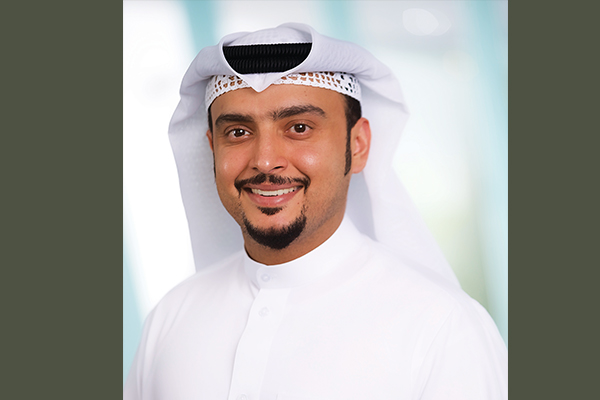
Sulaiman Al Ali is Deputy Chief Executive Officer (CEO) at Thuraya, the Mobile Satellite Services subsidiary of Yahsat. He was formerly the Executive VP of the Commercial Division within Yahsat Government Solutions. Sulaiman started with Yahsat in 2014 as a Satellite Projects Manager, responsible for delivering SATCOM managed end-to-end solutions for government customers. He has more than 17 years of experience, working in the regional and international telecommunications sector across the UAE, Nigeria, Pakistan and Ivory Coast. SatellitePro ME queries him about his journey and his plans for Thuraya.
What brought you to the satellite industry?
I joined Yahsat in 2014 as Director Satellite Projects and was tasked with delivering end-to-end managed satcom solutions for government customers. Since then, I have played many roles before being appointed now as Deputy CEO of Thuraya. In this role, I aim to augment the company’s operations and revenue growth through enhanced communication services for both our government and commercial customers. I am also responsible for strengthening Thuraya’s commercial strategy and leveraging its extensive offerings to provide our customers with flexible, adaptive solutions that address a wide range of critical communication needs.
How will you use the expertise you have built at Yahsat to make Thuraya profitable?
I believe solutions and business strategies that are backed by genuine insights, market research and pre-emptive customer service will unlock opportunities for growth. When you remove certain functionalities, stick to the essentials and add features that customers really need, you stimulate interest. We factored this simple yet crucial detail when developing our latest maritime voice solution, Thuraya MarineStar. The post-launch results from Asia are adequate proof that our readings were accurate – an unprecedented demand for Thuraya MarineStar has eclipsed supply. In a market of declining profits, last year was exceptional for us in terms of revenue growth.
What do you think are some of the big needs and trends in satcom market verticals, and how do you see Thuraya supporting those markets?
We perceive great opportunities in the aerospace market. The launch of our aero mobility platform – Thuraya Aero – last year marked Thuraya’s entry into the high-speed connected aerospace market. We held a couple of highly successful aerial surveillance demos of the Aero solution for key UAE government customers.
Demand for aeronautical connectivity could be driven by new markets and projects such as the One Belt One Road initiative to connect China to Europe, and to East Africa through Central Asia. Most of these trade routes pass through remote areas with little to no connectivity. The supply chain and aerial logistics tracking requirements on these routes will be huge, requiring reliable solutions that we can supply.
We are also excited about the Internet of Things (IoT). Since terrestrial cellular networks do not provide full coverage of the Earth’s landmass, the need for more satellite-based connectivity for the IoT sector to reach its full potential is undisputed. Although 5G is right around the corner, the next generation of cellular mobile networks will not fit every need. Thuraya can fill the gap by enabling wide-area IoT deployments.
Maritime, especially its entry-level segment, also holds great promise. More than 80% of the world’s fishing regions lie within Thuraya’s footprint, so ours is a truly inclusive service. Governments now require fishing vessels to report their catches electronically and log their movements while at sea. Thuraya makes compliance simple by bundling all the essential elements into simple solutions backed by flexible pricing.
What will Yahsat’s backing help Thuraya do that it could not do before?
The acquisition of Thuraya in 2018 has helped Yahsat-Thuraya to become the world’s eighth-largest satellite services operator, providing an integrated mix of fixed and mobile satcom technologies in more than 160 countries across Asia, Europe, Africa, South America and Australia. By effecting a total convergence of Ka-, Ku-, C- and L-bands, we have demonstrated our commitment to a fully connected world with safer borders, seas and skies. From consultancy, customisations for products and applications to operations and maintenance, we provide governments and multinational enterprises a secure, interoperable and multiband communications platform that never fails in times of need.
In 2020, Yahsat will initiate an ambitious satellite replacement programme for Thuraya. As its majority stakeholder, the company has a clear vision and a well-defined roadmap for Thuraya’s future development.
In your 17 years of experience, what have been your biggest challenges?
Very early in my career, I received international exposure through stints in tough environments like Nigeria, Pakistan and Ivory Coast. Each day presented a new set of challenges. Rather than viewing them as impediments, I learned to identify the hidden opportunities they contained. After joining Yahsat, I managed government and military customers who do not take no for an answer. No matter how difficult the situation is, there is no room for delay or excuses in the critical communications sector. Such experiences compel you to be innovative and develop solutions in line with customer requirements, within stipulated timeframes.
What opportunities do you foresee in 2020, and how will Thuraya address them?
Thuraya has consolidated its position overall, optimising revenue inflows and reining in operational expenses. Diversification in terms of deliverables and distribution channels is vital for future growth. Therefore, the challenge for us now is to establish our presence in newer market segments such as IoT and maritime.
Satellite operators need to transform from capacity providers to service providers, offering their customers an entire package. Following Yahsat’s lead in this regard, Thuraya could go deep into the value chain by providing managed solutions – a process that can involve designing, building and even operating a network, depending on customer demands. This could very well be the future for us.












Add Comment